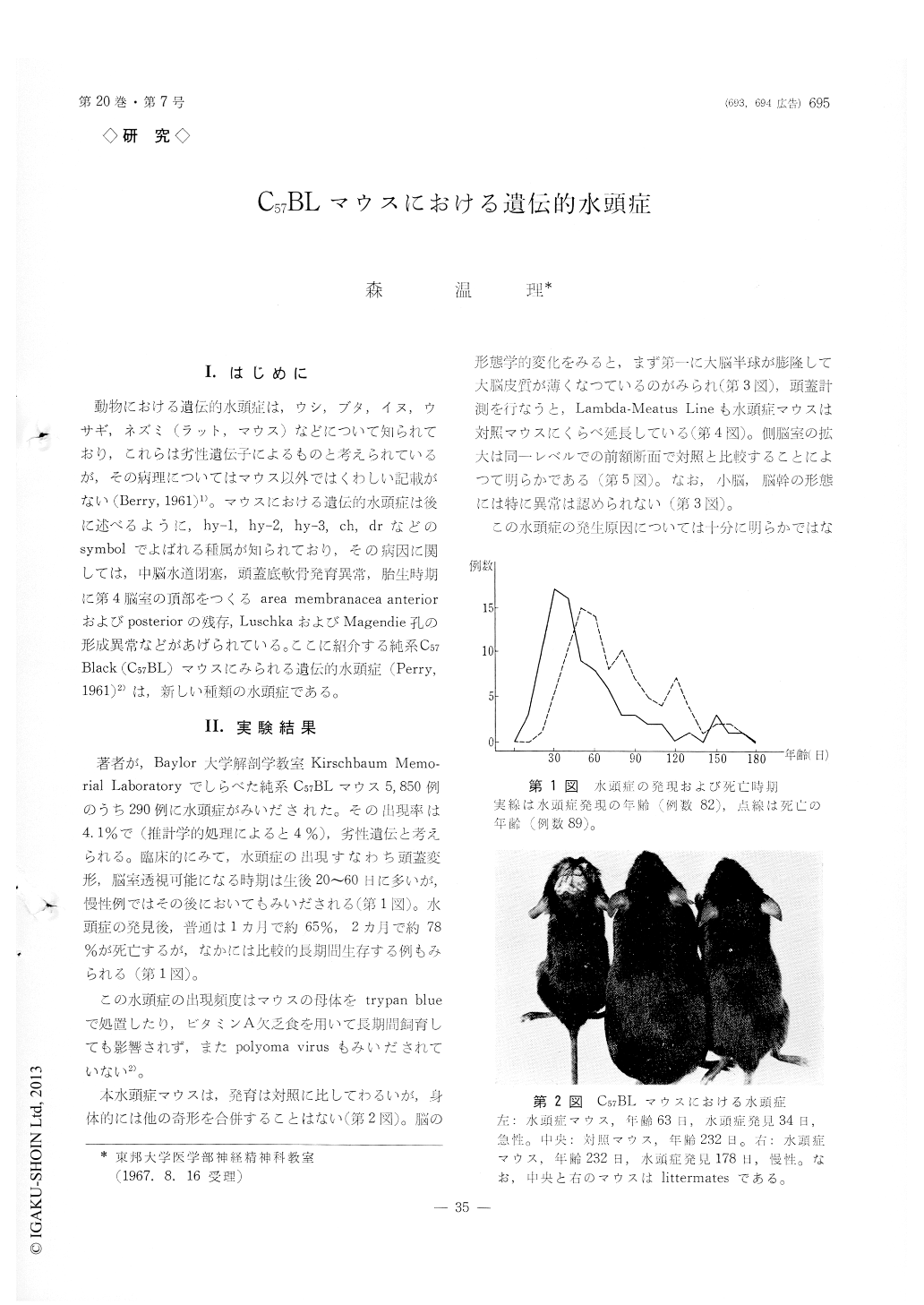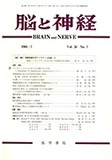Japanese
English
- 有料閲覧
- Abstract 文献概要
- 1ページ目 Look Inside
I.はじめに
動物における遺伝的水頭症は,ウシ,ブタ,イヌ,ウサギ,ネズミ(ラット,マウス)などについて知られており,これらは劣性遺伝子によるものと考えられているが,その病理についてはマウス以外ではくわしい記載がない(Berry, 1961)1)。マウスにおける遺伝的水頭症は後に述べるように,hy−1, hy−2, hy−3, ch, drなどのsymbolでよばれる種属が知られており,その病因に関しては,中脳水道閉塞,頭蓋底軟骨発育異常,胎生時期に第4脳室の頂部をつくるarea membranacea anteriorおよびposteriorの残存,LuschkaおよびMagendie孔の形成異常などがあげられている。ここに紹介する純系C57Black (C57BL)マウスにみられる遺伝的水頭症(Perry, 1961)2)は,新しい種類の水頭症である。
Hereditary hydrocephalus was found in 4.1% of inbred C57 BL mice at about 20-60 days after the birth. Most of these died 1-2 months after the ap-pearence of clinical symptons, but occasional animals survived for several months. The gross appearance of the brain in hydrocephalus clearly showed theexpanded hemispheres, dilated lateral ventricles, nor-mal proportions of the cerebellum and brain stem, and, in the advanced stage, occipital shunts from the lateral ventricles to the subarachnoidal space. Study of serial sections of brains failed to show evidence of atresia or formation of septae of the aqueduct. In most animals death appeared to be associated with hemorrhage into the subarachnoid, subdural and ventricular spaces, and also with impaction of the medulla and caudal cerebellum into the foranen mag-num.
It was hypothesized that in these animals the overproduction of cerebrospinal fluids in the lateral ventricles was the cause of hydrocephalus.

Copyright © 1968, Igaku-Shoin Ltd. All rights reserved.


